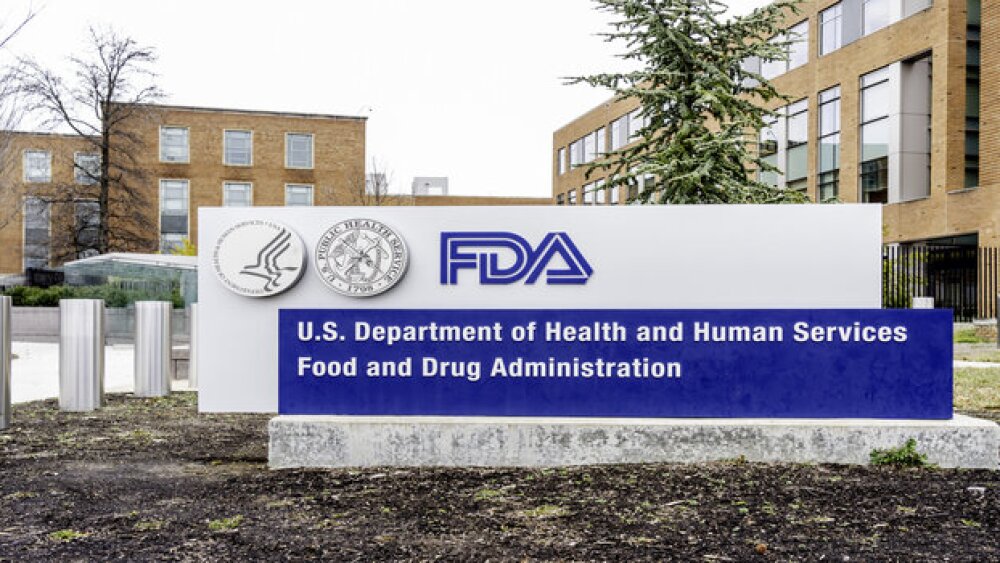Alzheimer's disease (AD) is one of the scourges of modern day health care. There are almost 30 million people worldwide diagnosed with AD — 5 million of them in the United States.
That's the equivalent of almost the entire population of Canada and Finland, respectively.
And it is projected to almost quadruple — yes, quadruple — by 2050, with 120 million people affected and to care for. (That's the same population as the country of Japan, the tenth most populous country on the planet.) This patient population will equate to 1 in 85 of the world's total population at that time..
Clearly, we are sitting on a health care time bomb. There are many reasons for the increase, including an aging population globally, the baby boomer demographic, and earlier and more accurate diagnosis. Some speculate that there are other causes related to environmental issues including food and/or water chain pollutants and other toxins from our modern lifestyles.
Not surprisingly, the pharmaceutical and biotech industry and academia have and continue to put a strong emphasis on developing treatments. Imagine a world where there were drugs which slowed the progression... or, better yet, stopped progression... or even helped reverse the disease and its effects, reverting people back to previous levels of functioning. Imagine, if you will, the Holy Grail — a prevention measure that could stop people from ever developing Alzheimer's...
All of the drugs approved so far though merely address some of the symptoms. None of them alter the progression of the disease and in most cases, the beneficial effects of the drugs wear off after time.
The market leader, Aricept, is co-marketed by pharma drug giant Pfizer and by the Japanese company that discovered the drug, Eisai. But Aricept goes off patent this year and the multibillion dollar sales pattern it has built will vanish quickly, as generic versions line up for approval and sale this year. There are three other marketed drugs — Exelon by Novartis; Razadyne by J+J; and Namenda by Forrest — all off patent or coming close to it.
So what do pharma behemoths like this do?
They invest in their own in-house programs and/or turn to outside small companies, biotechs, start-ups, and academic-types to source innovation.
That's what Pfizer did with Medivation to get rights to Medivation's drug, Dimebon. Unfortunately, Dimebon just failed its pivotal Phase III study, dashing hopes for patients and their caregivers and dropping about a billion dollars off the Medivation market cap. The stock collapsed by 70% within minutes of the news. More on that debacle shortly.
For years, researchers considered the fact that since a buildup in the brain of a substance called amyloid — which is deposited as plaques around neurons (brain cells) — is associated with AD, that this could actually be the cause of the disease. But if you look at post-mortem biopsies from the brain tissue of people who displayed strong symptoms of AD, there is no correlation between the amount of amyloid and the degree of symptoms.
In other words, some people who were severely demented and crippled with AD had either very little or no detectable amyloid; people with huge amounts of amyloid, on the other hand, had little-to-no mental deficit. Despite this fact, pharmacos have poured countless millions — if not billions — into developing drugs and even vaccines to try and remove amyloid from the brain of people with AD and restore at least some of their mental functioning... All to no avail.
Certainly, the drugs and vaccines have done the trick of clearing the amyloid. But the patients' mental functioning doesn't improve, which you might expect if amyloid is a consequence and not a cause of AD.
And so, prior to Medivation, investors lost their shirts on Neurochem and Myriad Genetics when their compounds, Alzemed and Flurizan (which tackle amyloid), failed clinical trials.
Even a vaccine from Wyeth/Elan cleared amyloid, but it didn't do anything for mental function. Further pursing this path is J&J/Elan. Their compound, bapineuzumab, is an antibody which failed in Phase II.
So how on earth did they get clearance to proceed to Phase III? Well, if you look deeply and into the secondary endpoints, in a subset of patients, and do a post-hoc analysis... there is a non-statistically significant hint of a trend!
That prior sentence would have any statistician having apoplexy. It breaks all the rules of objective, statistical analysis. The outcome of the Phase III is sadly predictable. Another big pharma deal approached out of desperation, just like Pfizer's deal with Medivation.
Despite all this evidence, pharma pours more money into amyloid and antibody and gene therapy approaches to removing amyloid. Don't we know that one sign of madness is to keep doing the same thing in the hope that the outcome will be different?
So why do they continue down this well worn and fruitless path?
Remember that many people have built careers on pursuing this one theory — which, up until recently, was the prevalent one. It's hard to pack up decades of effort and multiple careers and publications (not to mention funding) and say, "Ooops... "
So it seemed smart that Pfizer took up with Medivation, who were touting Dimebon as a different approach than anti-amyloid drugs. Trouble is, there was never any compelling evidence that it worked the way Medivation claimed. Some highly respected researchers thought they were cherry-picking a mechanism of action and conveniently ignoring other effects — so much so that some people referred to their management as Med-Evasion!
With the failed Phase III, the stock in tatters, and Pfizer hurtling toward (another) patent cliff with Aricept, investors and observers are asking, "Could this have been predicted and avoided?"
Well, there were plenty of warning signs. In fact, the buzzers were buzzing and the red lights were flashing, if only people had been paying heed instead of buying the hype.
A former NIH researcher posted his findings on an internet message board. He had sourced Dimebon — not too difficult to do, since it's an old off-patent generic antihistamine. This, by the way, was another question Medivation and Pfizer never really adequately answered: Just how were they going to get and enforce a patent claim on an old generic? By combining it with Aricept? When that was going generic, too?
The NIH researcher couldn't find any positive activity for Dimebon when he repeated the early work Medivation had done. Another leading researcher and academic claimed cherry-picking of effects by Medivation and no evidence for mitochondrial pore blockade.
Investors naturally assumed that if Pfizer had taken on the asset, then they must have combed through the data and made thoroughly objective analyses before doing the deal.
Let's take a reality check.
There were also perspectives on Dimebon from insiders at Pfizer, including members of the diligence team who "did this deal out of desperation."
Let me translate it this way: Having spoken with execs who have worked in big pharmaceutical companies their entire careers, if anybody thinks for one moment big companies make objective, rational, evidence-based, logical decisions all the time... then they really need their heads examined.
They make decisions based on powerful and influential peoples' egos, personal career progression prospects, politics, internal jockeying, capturing resources, and a whole load of other reasons.
So why was this deal done out of "sheer desperation"? The reason is this: Pfizer had nothing left after Aricept went off patent this year in a multibillion dollar market and they needed a sexy story to show shareholders they were doing something.
The CEO had put billions aside to do deals. They just hired a whiz kid new head of business development who was told to do a deal in each of the five key areas, Alzheimer's being one of them.
And there was only one product left out there in Phase II that wasn't partnered: Medivation's Dimebon.
So, despite the fact that a major academic was quoted as saying "the data were too good to be true," and despite the fact that the Phase II studies were done in Russia where the parameters are very different from elsewhere, and despite some of the serious questions that were asked of the data published in The Lancet... investors piled in. Because Pfizer couldn't be wrong... right?
Well they were wrong when they paid $1.3 billion for Esperion's torcetrapib (to replace Lipitor) and it failed Phase III...
And they were wrong when they paid multi-billions for Vicuron and Dalbavancin (to replace Zyvox).
So, Pfizer "validating" Dimebon takes its place in the long line of big pharma multibillion dollar gaffes. There will be plenty more. And it's not that Med-Evasion was blameless in all of this; the science was never explained in a compelling way, and hey — why not ride the stock up?
It's unfortunate that it cost a billion dollars in market cap and a lot of investors have lost their shirts.
So now what?
Let's step back and look at some facts: The field is thinning out. Amyloid is a futile target. And you need to define the mechanism, which is probably best addressed via multiple pathways. The ideal drug would be one that is a small molecule, orally available, with an ability to combine with other oral therapies; one that is disease-modifying, non-amyloid, non-tau compound. With those qualifiers, there are very few companies with compounds in or close to human trials.
I really can't understand, aside from vested interests in careers and garnering resource, as we talked about, why people are chasing amyloid still as a target. Maybe the tanker is too big to turn around quickly. Every piece of data recently points away from it, but good luck in spending a few billion more to further confirm what's already been confirmed.
The most advanced of the products that would meet these criteria is Prana Technology's, a copper and an iron chelating agent, and the next one is Anavex. There are two others which are gene therapies approaches which are very, very speculative and long-term.
The issue with the Prana chelation approach is that you may be sucking out essential minerals throughout the body without a focus on the neuronal implications. You don't know what the long-term effects of that would be.
Anavex's compound hits multiple pathways and it's pretty clear that there is no one single, solitary pathway in Alzheimer's disease.
Even better than slowing progression would be to halt progression. Even better than that would be recovery. Even better than that would be slowing onset, and the best would be if we could prevent the disease from occurring at all. If we could get somewhere in the middle, then that would be a huge blockbuster and a medical breakthrough that is cataclysmic in a good way.
Anavex has shown in animal models an improvement in memory, and there's a protection of the neuronal system. They hope to be able to impact mild cognitive impairment. In validated standard approach animal models, they've seen efficacy that exceeds Aricept. At very low doses, an actual disease modification has taken place in some cases.
There's obviously a long way to go between animal and human data but the other interesting thing is that affinity of these compounds to the receptor is quite strong at very low doses. So they may be able to get significant efficacy without having to make the trade-off between tolerability and adverse event profile.
Drug development, as we know, is a hugely risky endeavor. Animal models are not necessarily indicative of what will happen in human patients, but their animal models have allowed them to head into Phase I with optimism. We'll see what those data show.
In Phase I or the other side of Phase I, Anavex is going to have a bunch of other companies wanting to partner.
Be prepared for an exciting ride.
Sincerely,
Cameron Durrant, M.D.




